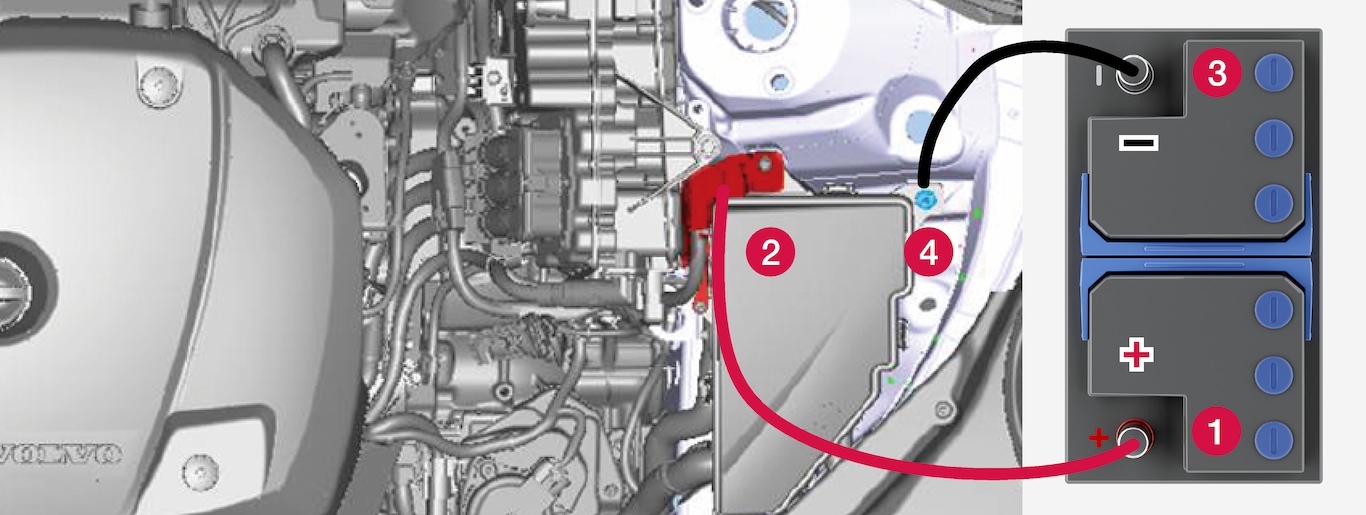Using jump starting with another battery
If the starter battery is discharged then the car can be started with current from another battery.

Important
The car’s charging point is only intended for jump-starting the car itself. The charging point is not intended for jump-starting another car. Using the charging point to jump start another car may cause a fuse to blow, which means the charging point will stop working.
If a fuse has blown, the message 12 V Battery Fuse failure Service required is shown in the driver display. Volvo recommends that an authorised Volvo workshop is contacted.
When jump-starting the car, the following steps are recommended to avoid short circuits or other damage:
Set the car's electrical system in ignition position 0.
Check that the donor battery has a voltage of 12 V.
If the donor battery is installed in another car - switch off the donor car's engine and make sure that the two cars do not touch each other.
Connect one of the red jump lead's clamps to the donor battery's positive terminal (1).
Important
Connect the start cable carefully to avoid short circuits with other components in the engine compartment.
Open the positive jump-starting point's cover (2).
Connect the red jump lead's other clamp onto the car's positive jump-starting point (2).
Connect one of the black jump lead's clamps to the donor battery's negative terminal (3).
Connect the black jump lead's other clamp onto the car's negative jump-starting point (4).
Check that the jump lead clamps are affixed securely so that there are no sparks during the starting attempt.
Start the engine of the "donor car" and allow it to run a few minutes at a speed slightly higher than idle approx. 1500 rpm.
Start your own car's engine. If the start attempt fails then extend the charging time to 10 minutes, and then make a new start attempt.
Note
When starting the engine in normal conditions the car's electric drive motor is prioritised - the petrol engine remains switched off. This means that after the start knob has been turned clockwise, the electric motor has "started" and the car is ready to move. A started motor is indicated by the driver display's indicator lamps extinguishing and its preset theme illuminating.
Important
Do not touch the connections between cable and car during the starting attempt. There is a risk of sparks forming.
Remove the jump leads in reverse order - first the black and then the red.
Make sure that none of the black jump lead's clamps comes into contact with the car's positive jump-starting point/donor battery's positive terminal or the clamp connected to the red jump lead.
Warning
- The battery can generate oxyhydrogen gas, which is highly explosive. A spark can be formed if a jump lead is connected incorrectly, and this can be enough for the battery to explode.
- Do not connect the jump leads to any fuel system component or any moving part. Be careful of hot engine parts.
- The battery contains sulphuric acid, which can cause serious burns.
- If sulphuric acid comes into contact with eyes, skin or clothing, flush with large quantities of water. If acid splashes into the eyes - seek medical attention immediately.
- Never smoke near the battery.
Note
The car cannot be started if the hybrid battery is discharged.